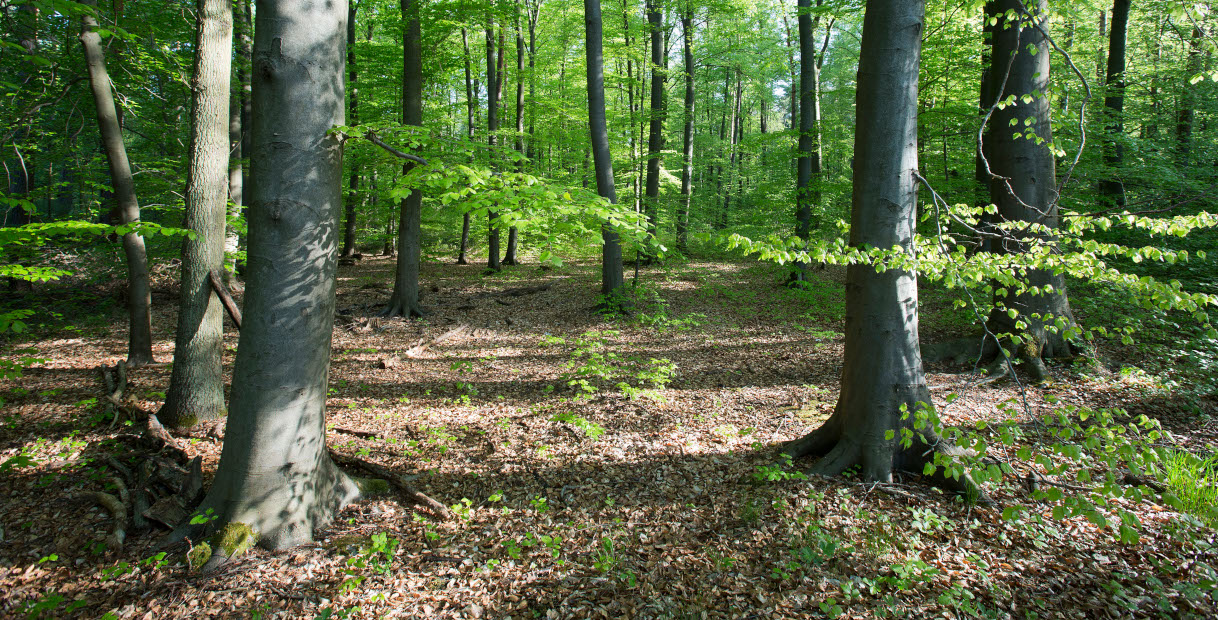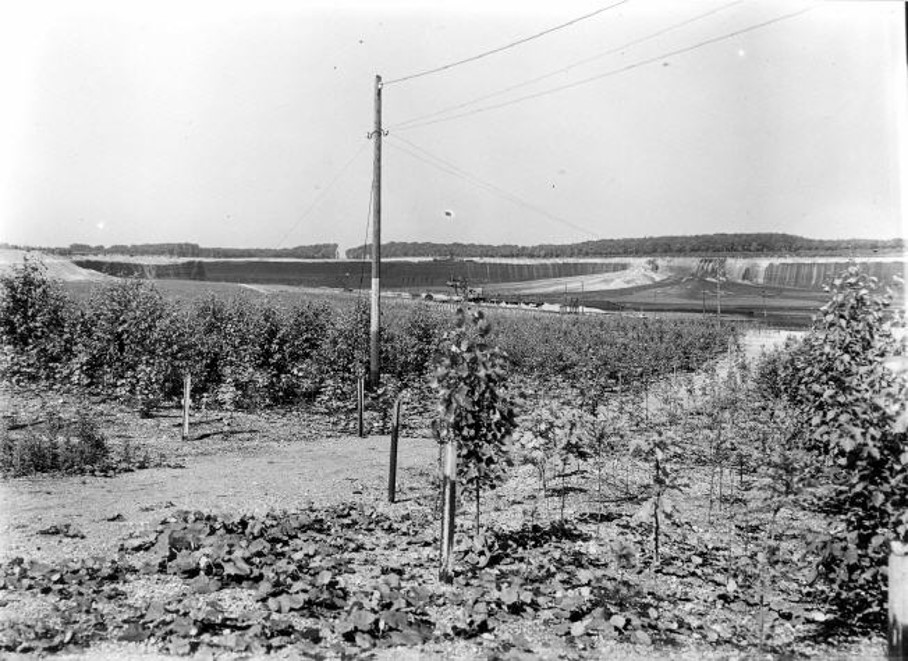
Early recultivation phase
The early stages of forestry recultivation were defined by a certain eagerness to experiment with regard to the selection of tree species as well as the soil substrates that were used. Initially, the recultivation objective was to protect the depleted opencast areas and especially the slopes against erosion and soil creep by planting greenery, without aiming to establish new forests. Soon, however, the overburden was dumped so that the areas could be used for forestry after lignite mining.
Systematic forestry recultivation subsequently began in the 1930s. Motivated by the research work of Heuson (1924) in the Lausitz lignite area, initial attempts at establishing forests began. Since site suitability for tree species was still uncertain at the time, numerous different types were planted to spread the risk under the assumption that those best suited to the site would survive.
Conditions were quite favourable for recultivation measures at the time. The overburden depth was relatively small since the lignite was close below the earth’s surface and only covered by a thin layer of loess loam and the bench gravel of the Rhine. Thus the proportion of living humus in the dump areas was relatively high. Material was loosely deposited during dumping with the aid of mine railways, which had a favourable impact on the water balance. Hydraulic dumps where the overburden was mixed with water, on the other hand, had less favourable properties.
Poplar phase
Since few areas were recultivated during World War II and the initial years afterwards, nearly 2000ha of land was available for recultivation at the beginning of the 1950s. To catch up and based on economic considerations, plans were made to initially reforest these areas with fast-growing tree species. Poplars and alders would serve as a preliminary forest for the subsequent planting of the next forest generation with different tree species. This stage of forestry recultivation was therefore called the ‘poplar phase’.
The soils for subsequent recultivation were largely composed of bench material and tertiary sediments such as gravel and clay. However, since these soil constituents were in part randomly dumped during the war, areas now existed with physically unfavourable conditions for reforestation. Poplar forests also grew very poorly on former sites such as crawler tracks, mine railway lines, briquetting plants and other structures. On the other hand, growth was above average in areas with good, loose soil material that was also alkaline with a good water balance. These poplar forests are being or have already been converted to beech and oak forests.
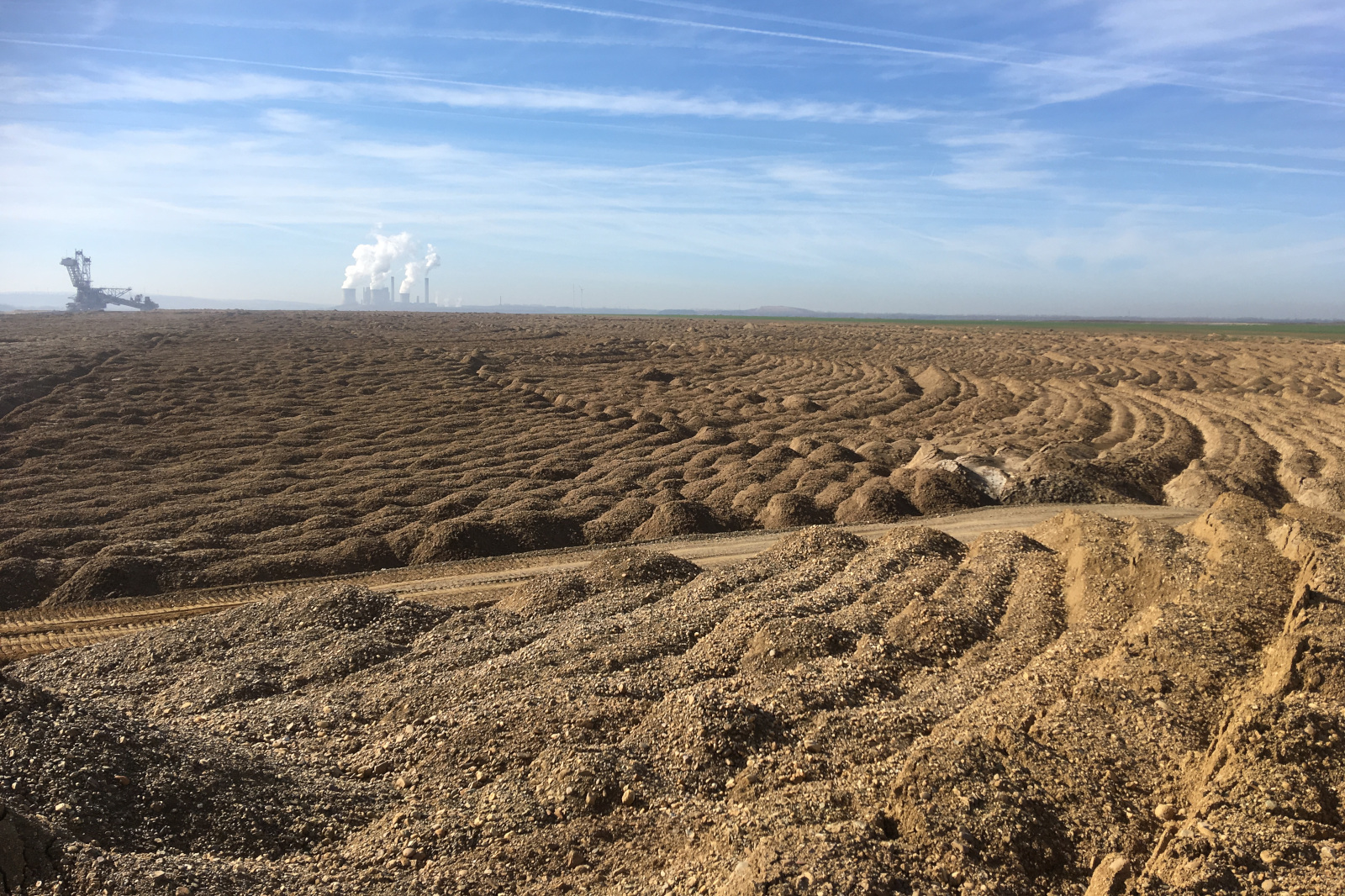
Forestry gravel
Studies by the University of Göttingen and the former State Geology Office formed the scientific basis for the use of special substrates for forestry recultivation starting in 1958. While only highly or moderately alkaline brown calcareous soils are suitable for agriculture, decalcified loess loam or a blend of loess and loess loam with the underlying gravel and sand of the Pleistocene benches can be used equally well for forest soil creation due to the lesser site requirements. These mixed substrates are called ‘forestry gravel’. Especially on slopes where pure loess/loess loam would erode, they enable the successful establishment of vegetation.
Thanks to its physical and chemical characteristics, forestry gravel provides ideal conditions for good, sustainable plant growth. The pH value of these mixed substrates depends on the initial substrate – notably the loess components – and therefore varies between pH 6.5-7.0 in the northern part of the lignite area and pH 5.0-6.0 in the southern part of the Rhenish lignite area. These pH values are suitable for all native species of deciduous trees.
Due to the clay and silt component of the loess, the forestry gravel has a sufficient water retention capacity to bind precipitation water for supplying the plants. These sites are therefore groundwater-independent just like the original luvisols. To prevent the accumulation of water at the bottom of the recultivation layer, permeable material is used for the top two metres of the raw grade, as with the restoration of agricultural sites.
The forestry gravel blend is not subsequently mixed but removed with a bucket-wheel excavator directly in the top cut of the opencast mines, where corresponding loess and gravel are found. Without artificial mixing, the forestry gravel is dumped by spreaders in a layer two to four metres thick in the areas for subsequent recultivation. This results in unsorted bulk material characterised by small and large components dumped with a high void volume. Good soil aeration and root propagation are thus assured. However, this only applies to mixed soils that have a sufficient loess content and thus no subsequent compaction tendency.
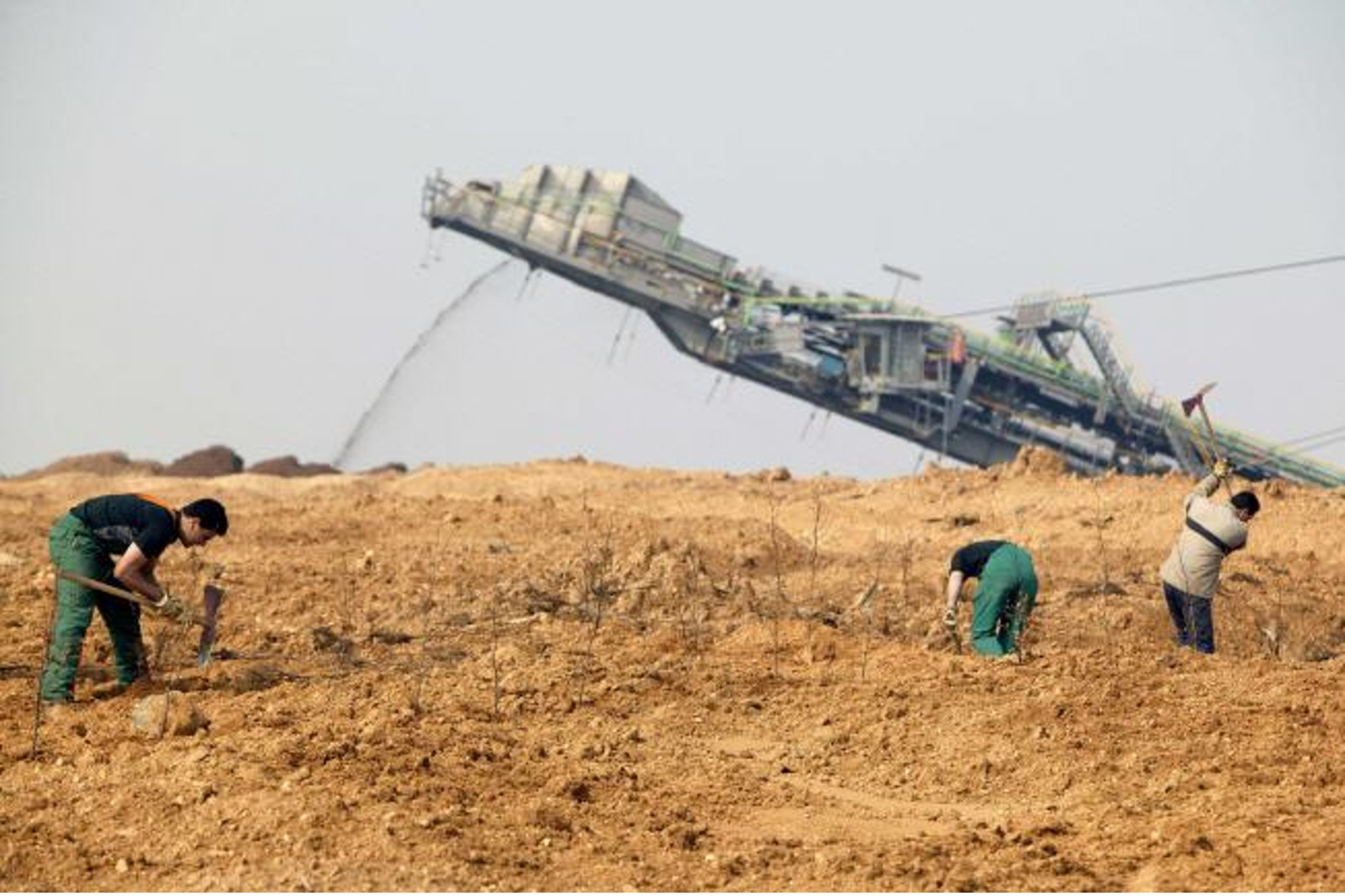
Modern recultivation methods
Today the dumps intended for forestry recultivation are no longer levelled.
Optimal soil looseness is thus maintained, providing the best conditions for the new forest. This rough new surface is proven to favour high ecological diversity: Even in smaller areas, small animals and plants find dry, warm places on the one hand and cool, damp depressions on the other hand. These areas are so rough, however, that entering them for management is hardly possible. Crawler tracks are therefore graded at intervals of about twenty metres today. A cable with steel plates is then dragged across the ground between two tracks, smoothing out the worst unevenness. This is called the ‘chain drag method’. Subsequently the crawler tracks are used as log trails for forest management and maintenance with a low impact on the soil.
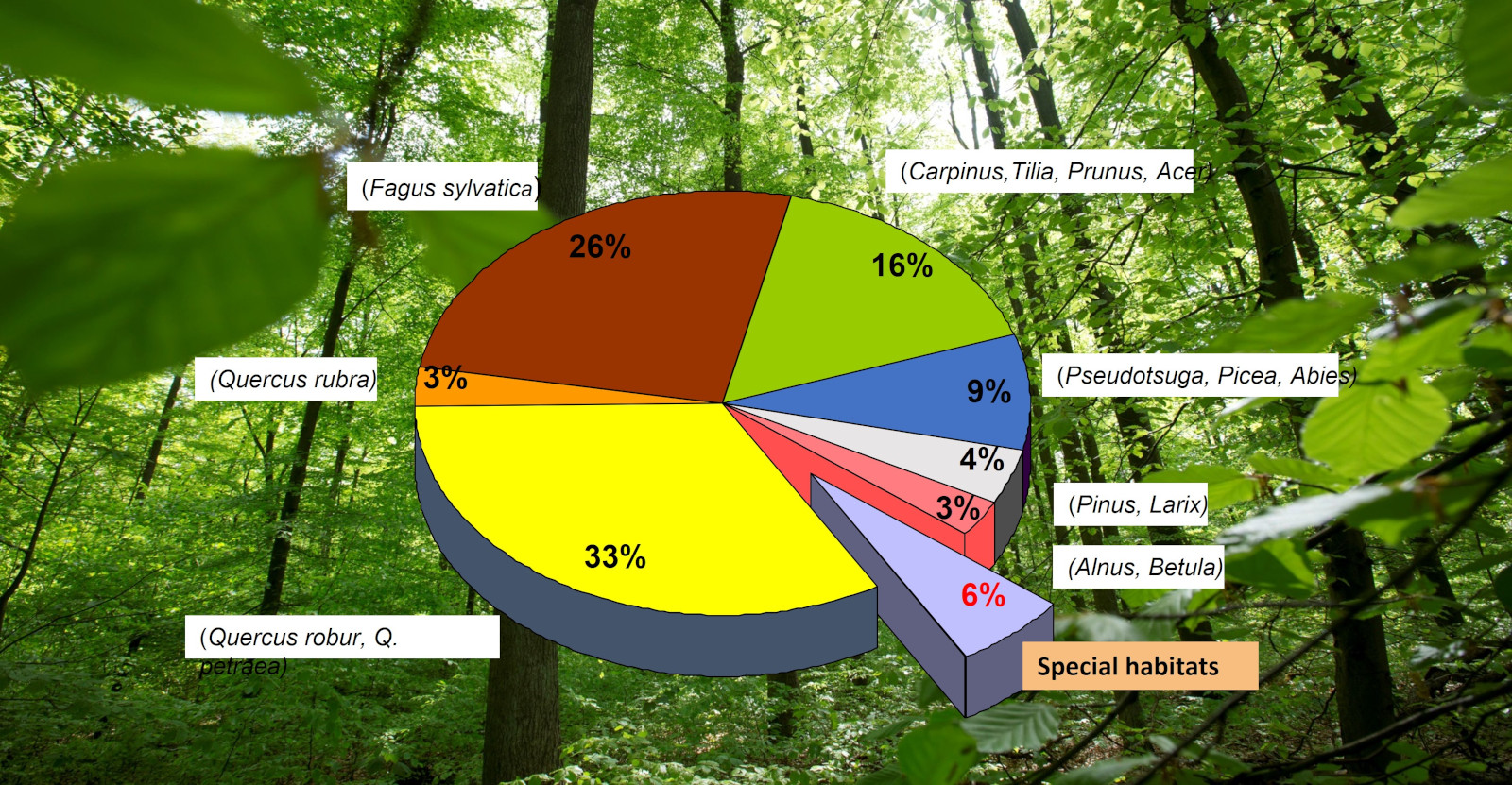
Diversity of trees and shrubs
Since the establishment of forestry gravel as the recultivation substrate, reforestation proceeds directly with oaks and beech as the primary native tree species on around 80% of the area. Deciduous trees take precedence over conifers since they have been the predominant natural vegetation in the Rhine Basin since time immemorial. But conifers (evergreens) are planted as well. Their scattered presence diversifies the landscape and providers winter cover for wild animals. Poplars and alders serve as nurse tree species for the growing stands. As nurse trees, the fast-growing poplars provide sufficient shade for the slower-growing primary tree species underneath them. The poplars are ringed after about 15 years. This means that the flow of sap is interrupted by removing a ring of bark, so the tree slowly dies and assumes its subsequent function as standing deadwood.
RWE foresters and forest workers plant several hundred thousand trees on the dump areas every year, mainly common oak and common beech but also small-leaved linden and wild fruit trees. Young trees are obtained from nurseries. They also harvest tree seeds in the existing stands of the pre-mining area to maintain the genetic potential of the old native forests. Sufficient gaps for the natural migration of species such as birch remain in the young stands.
The growth of all tree species is outstanding, especially on the loosely spread, loess-rich forestry gravel. The forestry gravel soils are generally high enough in nutrients that no fixed fertilisation regime is specified. In general, fertiliser application can be omitted entirely. Individual trees are only fertilised if needed in the first few years, usually one time.
Recultivation is by no means concluded once stands are established. Ongoing professional management and maintenance of the recultivated stands is required. In particular, the mix of tree species needs to be managed to ensure the lasting success of the recultivation measures. The principle of near-natural forest management is observed in the planning and care of such new forests.
Various studies have been conducted to improve the success of forestry recultivation. For example, the re-establishment of various species has been examined along with the effects of surface design and the propagation of earthworms under various conditions. Glades and succession areas increase the diversity of forest sites. Measures such as the placement of standing deadwood, forest edge design and the transfer of forest soil are implemented under our biodiversity strategy to increase the diversity of species in the forest.


